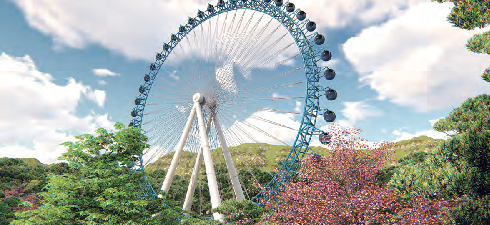- Albanian
- Arabic
- Belarusian
- Bengali
- Czech
- English
- French
- German
- Hebrew
- Hungarian
- Indonesian
- irish
- Italian
- Japanese
- kazakh
- Persian
- Russian
- Thai
- Uzbek
- Vietnamese
roller coaster track drawing
The Art of Roller Coaster Track Drawing
Roller coasters are not just adrenaline-pumping rides; they are also intricate works of engineering and design. At the heart of every thrilling experience lies the roller coaster track, carefully crafted to maximize excitement while ensuring safety. The process of roller coaster track drawing is a fascinating blend of artistry, mathematics, and engineering principles that transforms abstract ideas into real-world experiences.
Understanding the Basics
At its core, a roller coaster track drawing is a technical representation of the proposed track layout. This drawing serves as the foundation for the entire project, guiding engineers during the construction phase. A well-designed track must follow specific principles of physics and dynamics, influencing how the train moves through twists, turns, and inversions.
The Role of CAD Software
Modern roller coaster design increasingly relies on Computer-Aided Design (CAD) software. This powerful tool allows designers to create detailed, three-dimensional models of the track. With CAD, engineers can simulate the physical forces acting on the roller coaster cars, ensuring that each element is both exciting and safe. The software enables designers to visualize the final product, manipulate curves, and adjust heights with precision.
Key Elements in Coil Design
1. Height and Drop The thrill often begins with an exhilarating drop. A steep incline creates potential energy that is converted into kinetic energy as the coaster descends. Designers must carefully calculate the angle and height to create a breathtaking experience while maintaining rider safety.
2. Turns and Banked Curves Sharp turns can induce lateral g-forces that add to the thrill. Banked curves help mitigate the forces acting on riders, allowing them to stay seated while offering an exciting experience. The angle of banking is calculated using principles of physics, ensuring a smooth and exhilarating ride.
3. Inversions Loops and corkscrews add an extra thrill factor. Designing these elements requires a deep understanding of rider comfort and safety. Engineers must ensure that g-forces remain within safe limits while still delivering an adrenaline rush.
roller coaster track drawing

4. Supports and Structures The track itself isn't the only focus; the supporting structures must be designed to withstand the forces exerted by the cars traveling along the track. Support columns must be strategically placed and designed to provide stability without obstructing the ride experience.
Aesthetic Considerations
While functionality is crucial, aesthetics also play a significant role in roller coaster design. The track's color, shape, and overall visual appeal contribute to the ride's theme and ambiance. Designers consider the visual impact of the ride on the surrounding environment, ensuring it complements the overall theme park experience.
Safety Measures in Track Design
Safety is paramount in roller coaster track drawing. Engineers must adhere to strict safety standards and regulations, which govern everything from the materials used to the dimensions of the track. Each design undergoes rigorous testing, including computer simulations and physical prototypes, to identify potential issues before construction begins.
Collaboration and Innovation
The creation of a roller coaster track drawing is rarely a solo endeavor. It involves collaboration among various professionals, including engineers, architects, and ride operators. This multidisciplinary approach fosters innovation, bringing fresh ideas to the table and enhancing the overall design process.
Conclusion
In summary, roller coaster track drawing is a complex yet rewarding discipline that combines art, science, and engineering. From the initial sketch to the final construction, each step is crucial in delivering an exhilarating ride experience that captivates thrill-seekers around the world. As technology continues to evolve, the future of roller coaster design promises even more exciting and innovative concepts that push the boundaries of creativity and engineering. The magic of roller coasters lies not just in their thrilling drops and loops, but also in the meticulous planning and artistic vision that goes into every twist and turn of the track.
-
Flume Ride-Hebei Zhipao Amusement Equipment Manufacturing Co., Ltd.|Thrilling Water Attraction&Customizable DesignJul.30,2025
-
Flume Ride - Hebei Zhipao Amusement Equipment | Water Coaster, Thrilling DescentJul.30,2025
-
Flume Ride - Hebei Zhipao | Thrilling Water AttractionJul.30,2025
-
Flume Ride: Thrilling Water Attraction by Hebei Zhipao|Log Flume Manufacturers&Flume Ride DesignJul.30,2025
-
Flume Ride-Hebei Zhipao Amusement Equipment Manufacturing Co., Ltd.|Thrilling Water Coaster, Safe DesignJul.30,2025
-
Flume Ride-Hebei Zhipao Amusement Equipment Manufacturing Co., Ltd.|Thrilling Water Attraction, Safe DesignJul.30,2025
